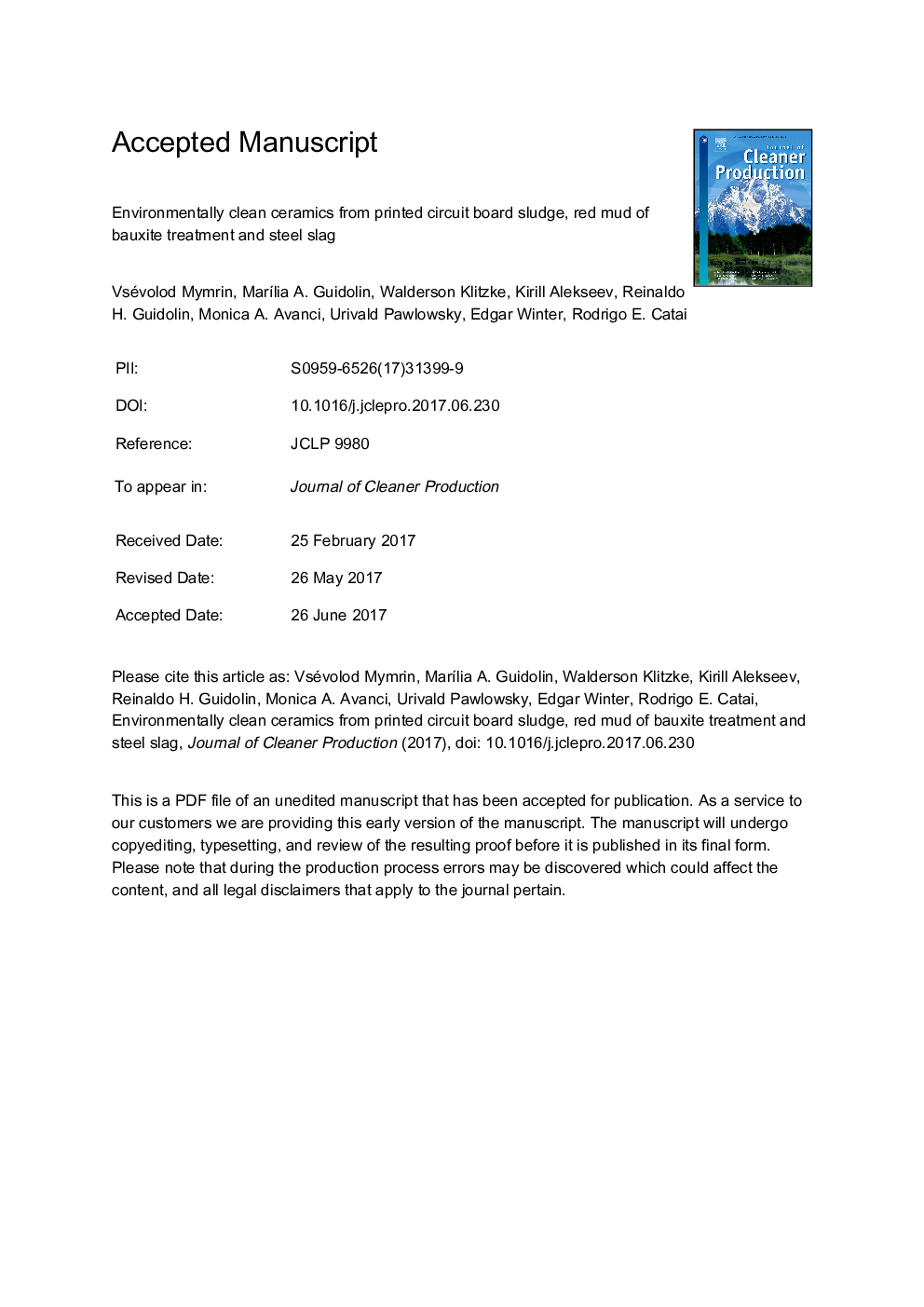| Article ID | Journal | Published Year | Pages | File Type |
|---|---|---|---|---|
| 5480493 | Journal of Cleaner Production | 2017 | 26 Pages |
Abstract
The main purpose of this study was the development of new ceramic composites from three industrial wastes: printed circuit board, red mud from bauxite processing and steel slag, completely replacing clay and sand as traditional natural raw materials. Rectangular test specimens with 20 Ã 60 mm in size were compacted with 3 MPa pressure, dried and sintered at temperatures of 1000°, 1050°, 1100°, 1150°, 1200°, 1250° and 1275 °C for 3 h. The resulting ceramic flexural strength was 15.39 MPa; water absorption ranged between 4.47 and 38.45%; linear shrinkage, between 1.17 and 16.90% and bulk density, from 2.10 to 2.56 g/cm3. The leaching and solubility tests show a reliable bonding of all metals until a level far above the requirements of Brazilian sanitary standards.
Related Topics
Physical Sciences and Engineering
Energy
Renewable Energy, Sustainability and the Environment
Authors
Vsévolod Mymrin, MarÃlia A. Guidolin, Walderson Klitzke, Kirill Alekseev, Reinaldo H. Guidolin, Monica A. Avanci, Urivald Pawlowsky, Edgar Jr., Rodrigo E. Catai,
